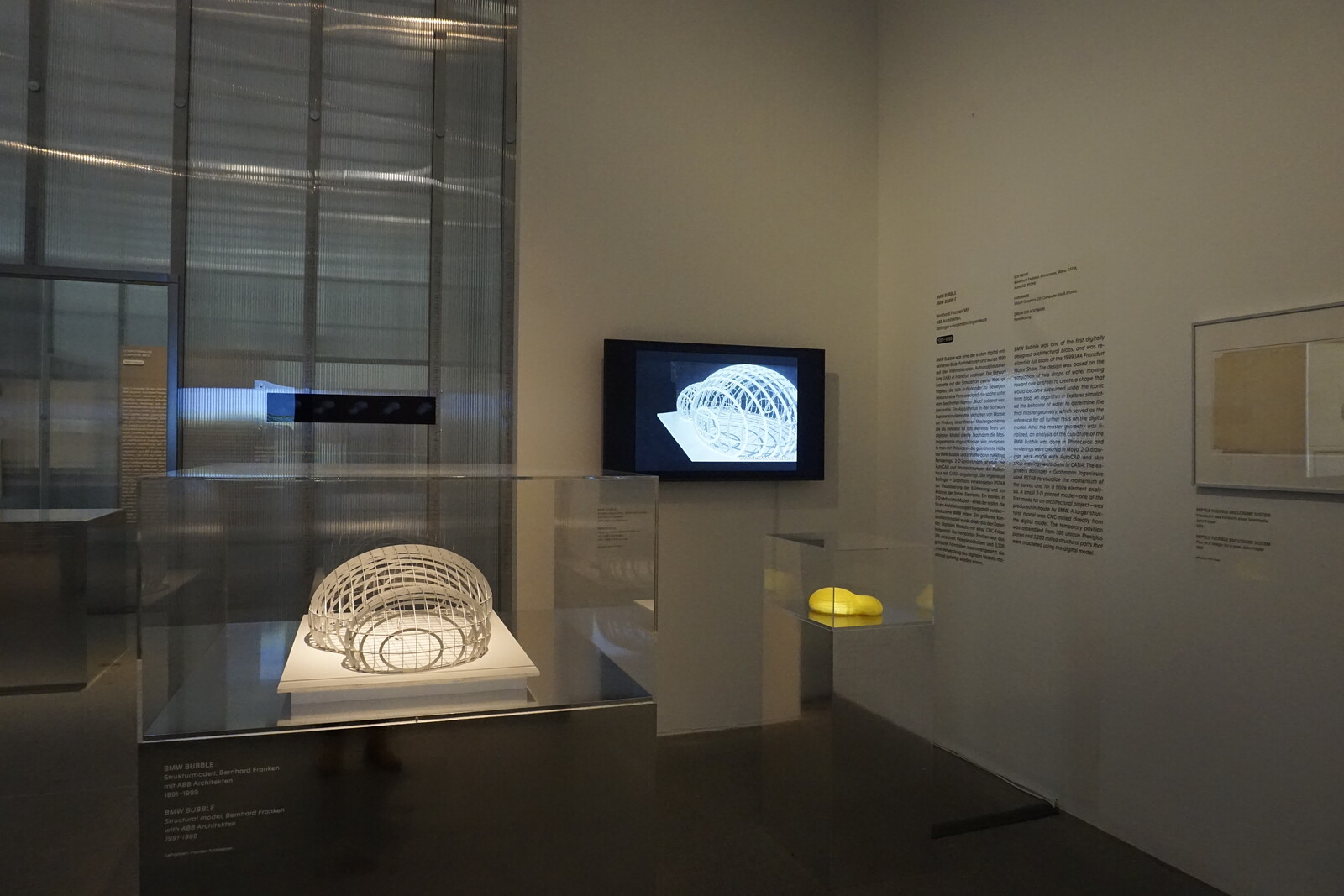The Architecture Machine
The Role of Computers in Architecture
October 14, 2020–June 6, 2021
Barer Straße 40
in der Pinakothek der Moderne
80333 Munich
Germany
Hours: Tuesday–Saturday 10am–6pm,
Thursday 10am–8pm
T +49 89 28922493
F +49 89 28928333
am@architekturmuseum.de
The Architekturmuseum der TUM reopened March 16, 2020.
For the first time in the German speaking countries, the Architekturmuseum der TUM presents a large-scale exhibition on the computer’s influence on architecture. Beginning in the 1960s and ending in the present, the show recounts this fascinating history in four chapters, which sum up key developments of the so-called digital revolution: The computer as a drawing machine, the computer as a design tool, the computer as a medium for storytelling, and the computer as an interactive platform. The fundamental question that guided the two-year research project on which this show is based is simple: has the computer changed architecture, and if so, how?
The exhibition is curated by Teresa Fankhänel and contains more than 40 international case studies and projects by architects, artists, engineers and researchers, many of which are collected in such an overview for the first time. Next to well-known pioneers such as Greg Lynn FORM (USA), John and Julia Frazer (UK), Reiser + Umemoto (USA), Itsuko Hasegawa (Japan) or Asymptote Architecture (USA), the show includes several new archival finds, among them the first building in Germany designed with the help of a computer, the Siemens Pavilion in Hanover by Ludwig Rase and Georg Nees (Germany, 1970), and the entry to the Federal Government Buildings Competition in Bonn by Oswald Mathias Ungers and Werner Goehner (Germany/USA, 1971–72). Another newly unearthed exhibit is the first large-scale rendered fly-through of an urban space, Donald Greenberg’s animation Cornell in Perspective (USA, 1969–72), which was digitized specially for the show from the original 16mm film. The exhibition also assembles several entries to one of the first architectural competitions, which required an animation as part of the design brief, for the unbuilt the Eyebeam Center (2001).
In addition to historical material the presentation collects recent projects by offices such as SHoP Architects (USA) and Atelier Oslo (Norway) as well as renderings by young practitioners such as Jana Čulek (NLD), Lucia Frascerra (UK), Dyvik Kahlen (UK), Brick Visual (Hungary), Mir (Norway) and Dennis Allain (USA). As part of the chapter on interaction, the show presents a newly updated version of You+Pea’s computer game London Developers Toolkit (UK, 2020) that lets users create their own satirical skyscrapers, and revisits Keiichi Matsuda’s viral video work Hyper-Reality (UK, 2016).
Furthermore, the show presents, for the first time, a newly researched software timeline, which details the development of all major architectural programs which architects are using today as well as an overview of historical input devices for drawing on the computer. Finally, we are showcasing a reconstruction of the first drawing software Sketchpad by Ivan Sutherland (USA, 1963), recreated by Daniel Cardoso Llach (USA, 2017).
This exhibition is based on a two-year research project, which was supported by the Gerda Henkel Stiftung. In preparation of the book and exhibition an international conference was held at the Technical University in Munich on October 11, 2019, which included contributions by scholars and practitioners from the United States, Canada, China, the UK and Germany.
The exhibition is designed by Florian Bengert / BNGRT, Munich. Graphic design is by Parat.cc, Munich.
An accompanying catalogue was published by Birkhäuser (248 pages, 227 images, separate German and English edition). The book contains eight essays by international scholars: Anna-Maria Meister, Georg Vrachliotis, Molly Wright Steenson, Mollie Claypool, Roberto Bottazzi, Teresa Fankhänel, Felix Torkar and Theodora Vardouli. It includes new research by another 24 researchers, architects and curators detailing the case studies that are included in the exhibition. The book also presents an overview of the history of architectural software.
An online tour of the exhibition is available here.
The exhibition and book are supported by the following sponsors: PIN Freunde der Pinakothek, Wüstenrot Stiftung, Gerda Henkel Stiftung, Förderverein Architekturmuseum der TUM, Nemetschek Group, Baywobau, Wilkes Bavaria, Protektor, TUM, and BMW.
The Leibniz Rechenzentrum supports a new VR-installation by Atelier Oslo.















